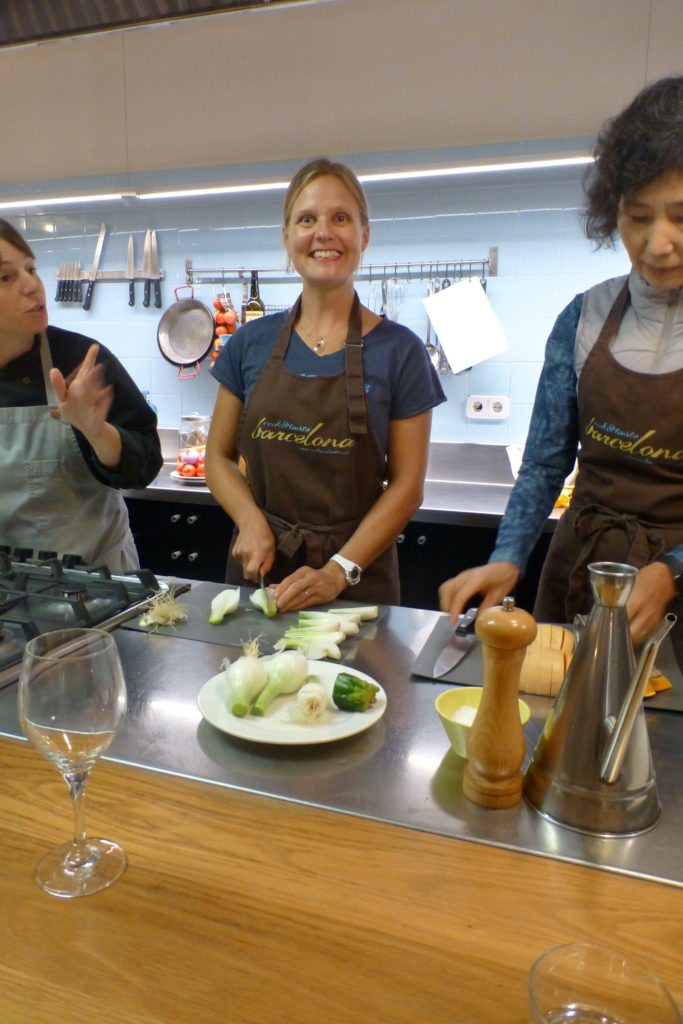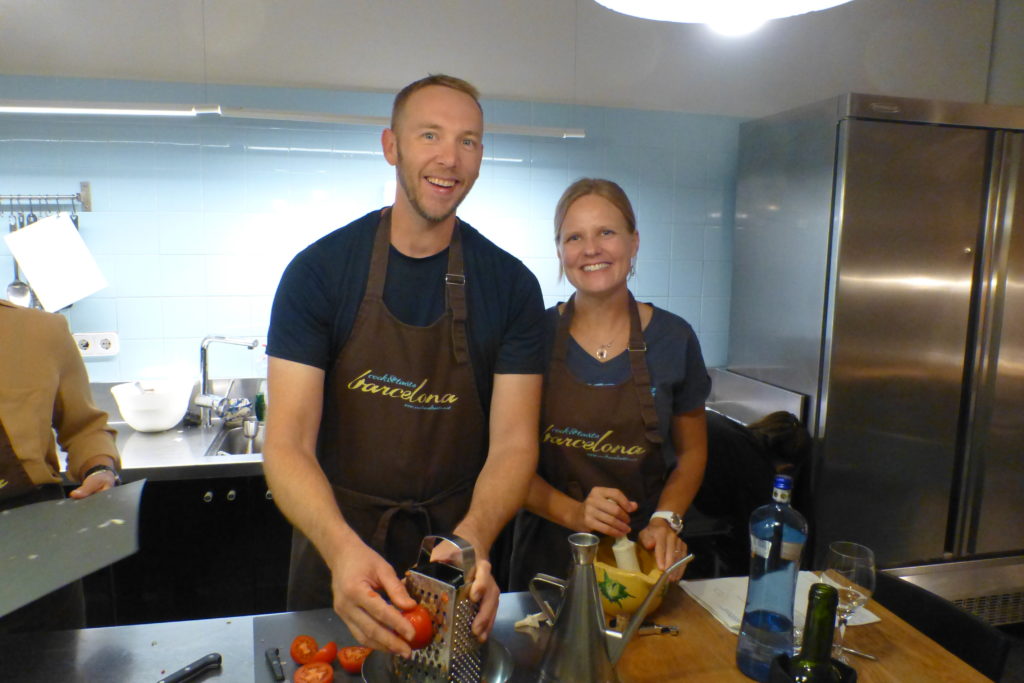If we could have kept climbing, I think both Sarah and I would have wanted to stay longer in Greece; we only got a taste of the rest of the country. At the same time, Spain has been high on our list of travel wishes for quite some time now. Barcelona sounded like a great place to start!
Flights don’t often make our blog…English teachers reading this will smile at the classic 9th grade personal narrative…2 pages of the drive/flight on summer vacation, then we had fun at the pool, the end! Anyway, this flight was unique. We flew on super-budget Ryan Air, which for a basement-low price gets you…nothing. In order to make up the difference in fare, they charge for everything. The entire flight is filled with attendants on the microphone and in the aisles selling anything from soda to lottery tickets (Spaniards love lottery tickets!); we had headaches by the time we landed. It was a bit chaotic; people were even standing up rummaging through overhead bins while we were landing!
Our arrival in the airport wasn’t without hijinks, either. Barcelona’s airport has two baggage claims; I am sure there is a logical system to this design, but no one explained it during all the advertisements on the flight. We chose the closest one, just like every other foreign tourist, only to find ourselves stuck on the wrong side of an automated self-locking exit door near the wrong claim. As we huddled with fellow lock-outs, I noticed a young woman coming through the exit doors, so I immediately bolted through the doors. I knew I wasn’t going to knock her over, but I’m pretty sure the poor girl thought she was about to die! Sarah followed, and then we worked the doors for others and got our bags without further issue (unless you count hiding behind a bus stop while six security guards headed the way from which you came). Barcelona, llegan los Raffs!

The next morning, we rambled the Ramblas…a Spanish word that means streams. It’s sort of the classic walk from Placa Catalunya (the giant main square) to the marina. Today, it’s a super touristy mile-long runway of souvenir stands and tents offering fishbowl-sized drinks, but it was once a bustling local gathering place and market area. After FC Barcelona victories, it apparently is still a major party scene, but we were here on a Monday morning. Many of the traditional neighborhood characteristics are still evident; you just have to look a bit harder: fixed chairs bolted to the sidewalk are usually monopolized by older men reading newspapers, wide tiled walkways resembling the streams that once flowed here, large iron lampposts and plane trees, and tiny balconies adding symmetry (and a breeze!) to the many apartments above the shops. Depending on the block you are on, you might see traditional fresh flower stands or lottery ticket kiosks mixed in among the junk. I don’t think I would want to ramble the Ramblas on a Saturday afternoon in June, but I liked it on an uncrowded Monday morning in November!

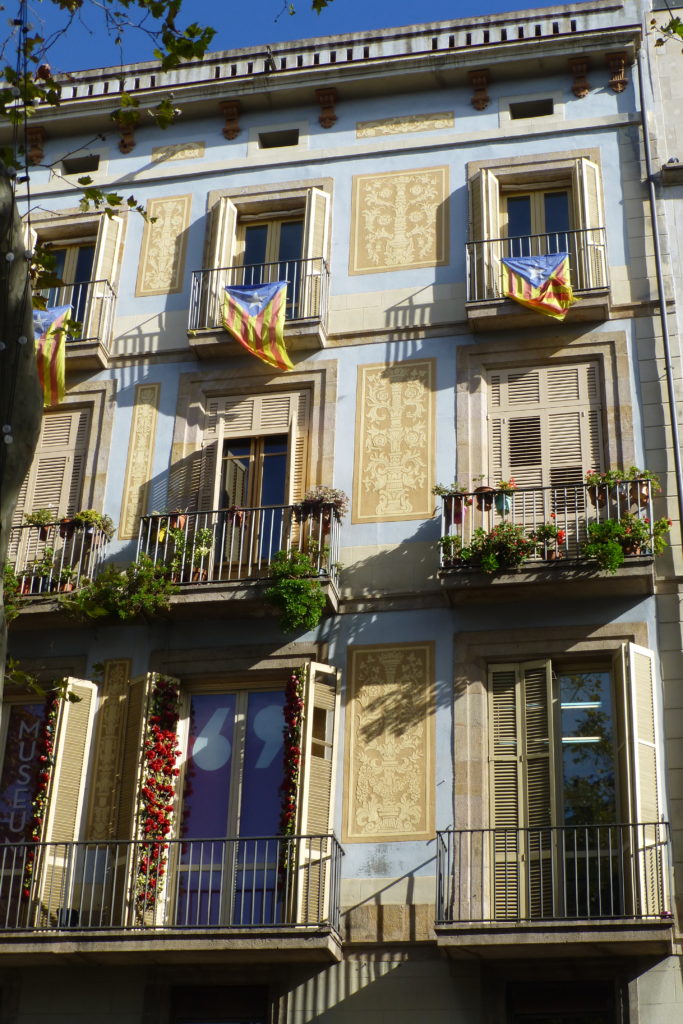
Probably the highlight of the Ramblas area was the market, La Boquerian Mercado, which dates back at least until 1200 AD. That’s not to say it carries old school charm (aside from maybe the giant ham hocks hanging from hooks above the meat counters, but that is virtually everywhere in Spain). It’s mostly touristy, although chefs come early in the morning to get the best stuff for their restaurants. We enjoyed shouldering our way through the tight, crowded aisles to check out jamon, queso, seafood, juice and fruit, empanadas, and even a couple of tiny tapa bars. Breakfast is pretty light in Spain, so we sampled our way through second breakfast with a couple of treats.
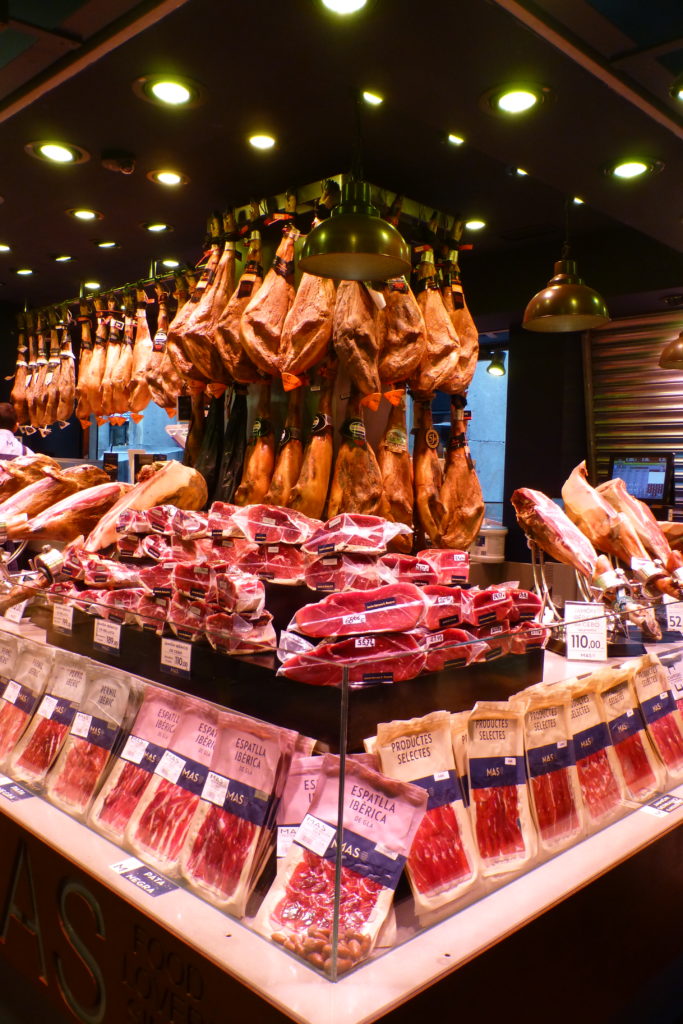
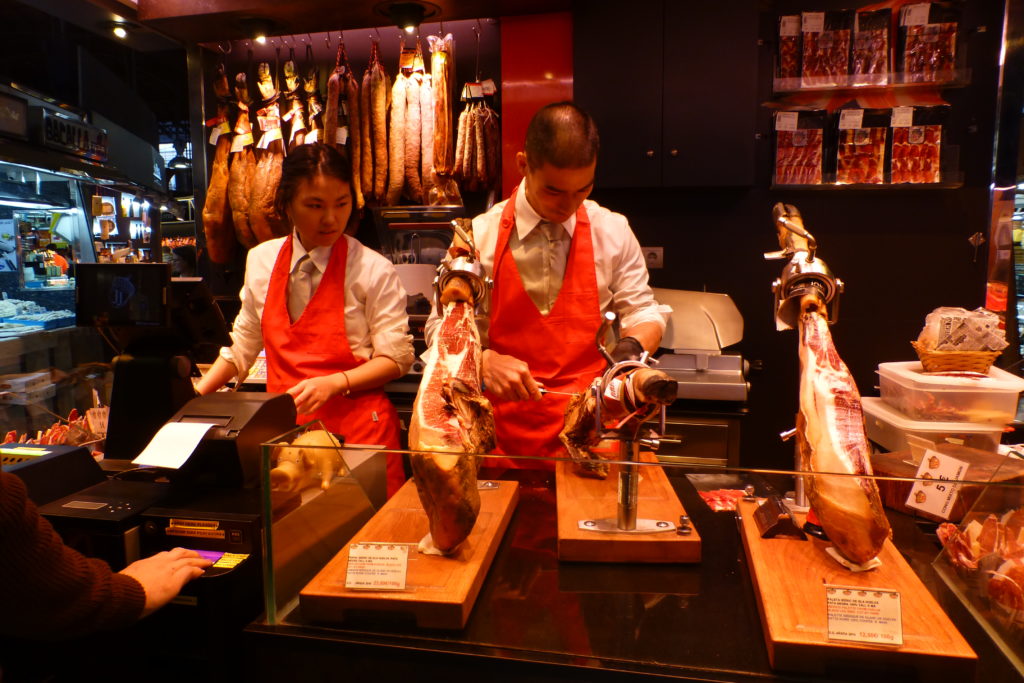
That afternoon we got our first taste of Modernisme (modern art) at one of the must-see highlights of Barcelona: La Sagrada Familia (Sacred Family). This giant church was started by the famed Antonio Gaudi in 1883 and finished…well, it’s not quite finished yet—they are aiming for 2026! Your first impression alone will explain the time frame…this thing is GINORMOUS, and nearly every inch contains decorative art that tells part of the story of Jesus, Mary, and Joseph in one way or another. Eight large towers meant to emulate bishops’ miter hats rise 330 ft. into the air. Four taller towers represent the apostles, while cranes continue to work the 400 ft. spire for Mary. The eventual coup de grace will be a 500 ft. Jesus spire in the center; it will be visible from the sea (several miles away).
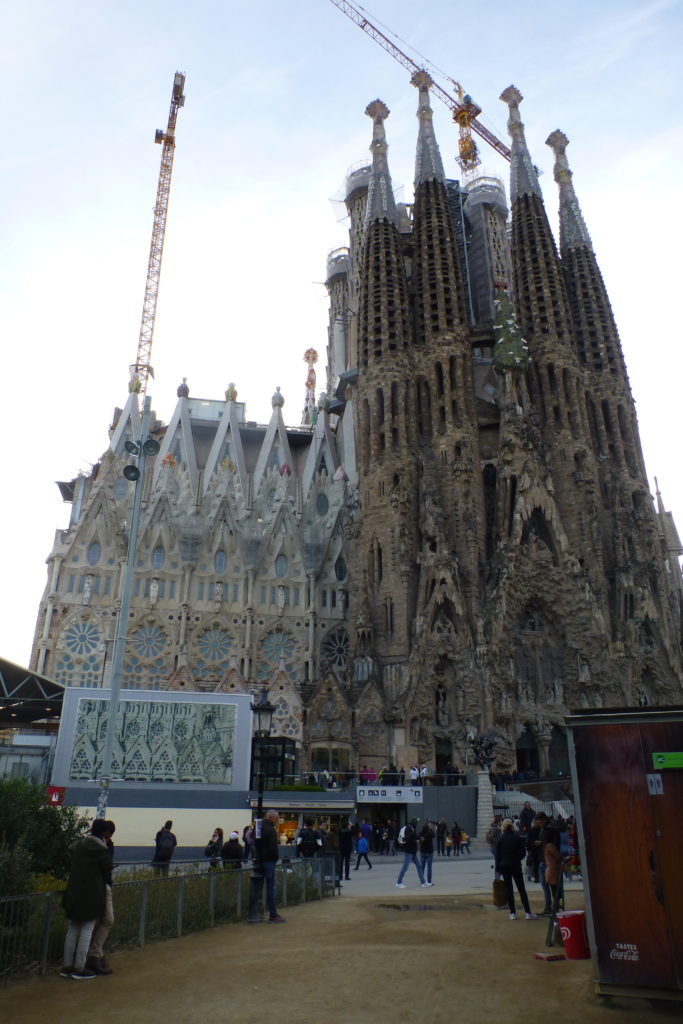
The current entry and exit sides hold the most detailed facades (the eventual main entry is barely started; in fact, the city has some negotiating to do with the rundown apartments across the street—about 70 years ago, a disillusioned mayor sold off part of the land needed to finish the church). You enter through the Nativity Façade, where ornate carvings mostly tell the joyous story of Jesus’ birth…right down to the very, Shrek-like donkey doing his best to get a peak into the manger. The exit side is much grimmer, with blocky, almost faceless, tormentors and the Last Supper making up the Passion Façade. At first, the contrast seems to stark. Viewed separately, it looks like two different artists who couldn’t agree on a vision for the church.
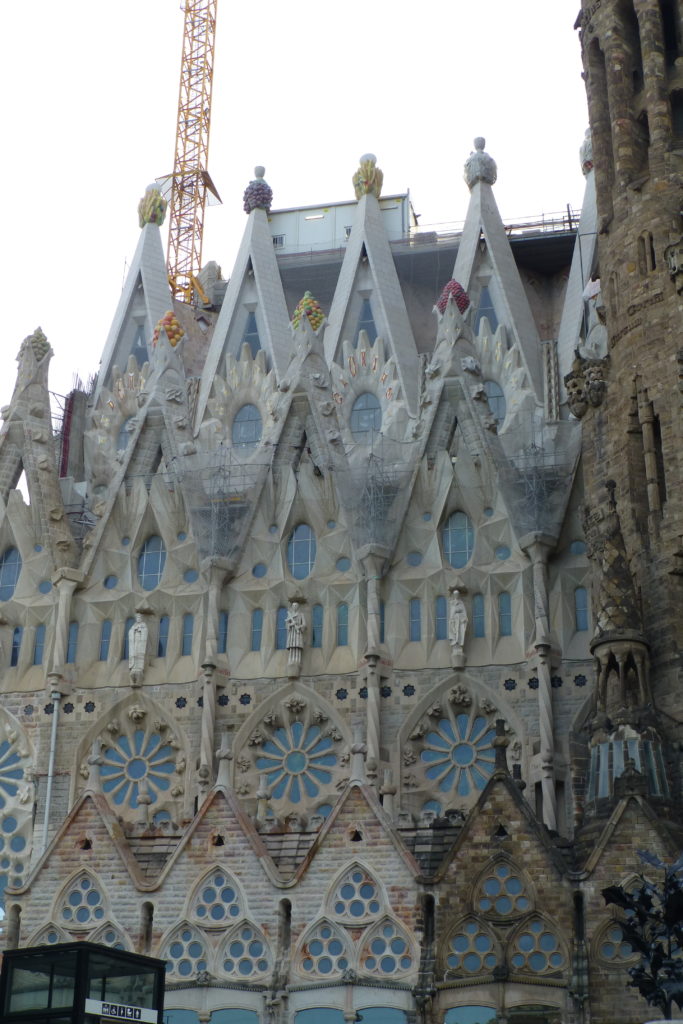

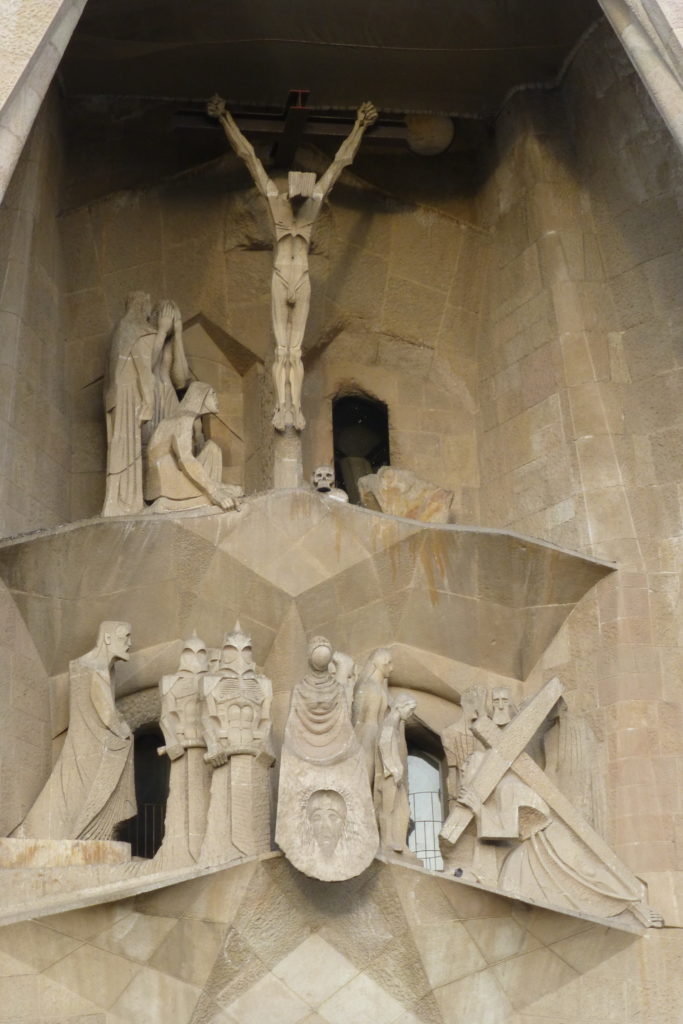
After stepping inside, however, you get a better sense of the whole vision (that, and a handy video explains it for Neanderthals like me). As a whole, Sarah and I learned in Barcelona that we are not fans of modern art. I think we saw enough of it to understand why it takes talent, but it’s just not our thing. The Sagrada was an exception. We both found the interior to be beautiful. While the Nativity Façade was birth, and the Passion Façade was death and darkness, the interior was life—isn’t that what the heart of the church should be? Aside from the Latin Cross dimensional proportions, the church was not like any I’d ever before seen: fifty-six columns resembling tree trunks lead up to colorful mini-domes painted to look like leaves; the result is that of a forest, but also a living, breathing space. We were here at dusk, but during the day, stained glass windows strategically placed for the trajectory of the sun mimic the outer colors of morning and afternoon light within the church. The Sacred Family are depicted way, way up on the high altar. This is a place not only to worship, but to celebrate the gift that we have in life itself.


I have to give a shout out before describing any more sights—we don’t get too many visitors, since we don’t have a home, but we did get a chance to meet up with a friend who has moved here to go to graduate school. Cody and I used to coach together, and we were lucky enough to have him scout out a cool speakeasy in our neighborhood and use his Spanish skills to get us through the door! It was fun to hear all about his transition to living in a foreign country (don’t worry parents, we are still coming home!) and to get some advice on travelling here in Spain. Good luck, Cody, we are thoroughly impressed by your adventure!
After leaving Cody, we got our first delightful taste of sitting at a tapas bar (after 9:00 PM, on Spanish dinner schedule, no less!). It was actually a Basque bar that served pintxos; usually about two bites per serving, these were often some sort of open-faced treat (chorizo, sardine, cheese spread, etc.) on a toasted baguette. You took what you wanted from the displays and kept your toothpicks to give to the bartender at the end, which is how he tallies your bill. Oh yeah, Basque wine is light and delicious…we’d really wanted to go to that region but the weather is bad this time of year, so the pintxos were a great sample instead.
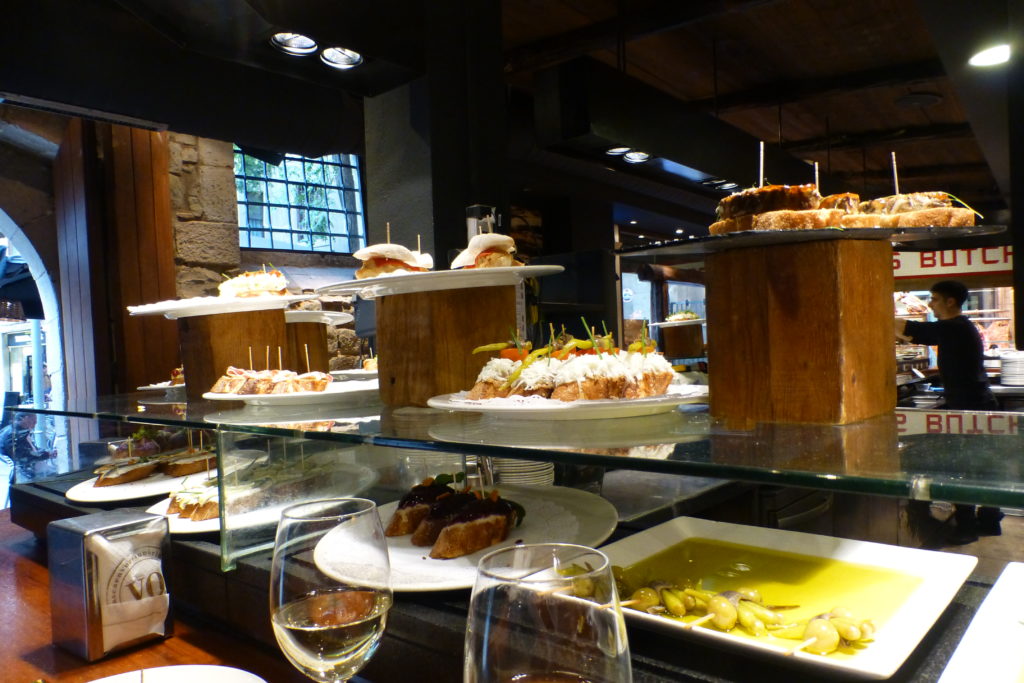
We spent most of the next morning touring around the Barri Gotic and El Born districts, partly tourist but also with some historical and current political importance. Highlights included a really cool old restaurant once frequented by a teenage Picasso; it was called El Quartre Gats because when the owner told his friends he was going to open a 24-hour restaurant back around 1900, they laughed and replied, “it will just be you and four catsâ€!
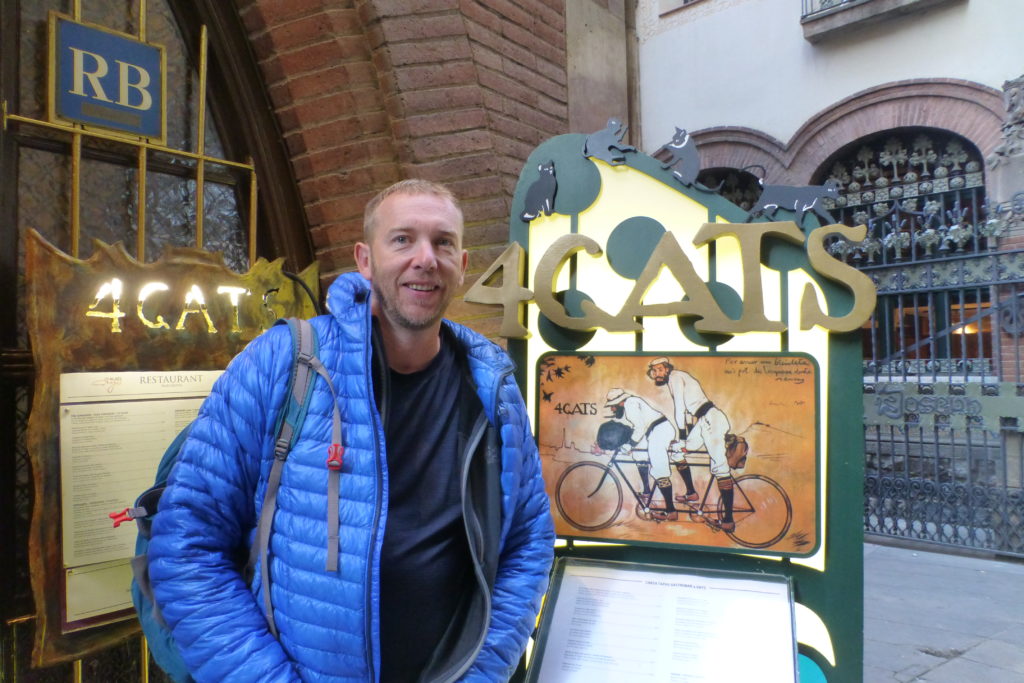
As we got farther from the shopping district near the main placa and the tourist strip in our neighborhood, we began to see many more Catalan flags and also the main square with their government building—in recent years, the sights of protests for Catalan independence from Spain.
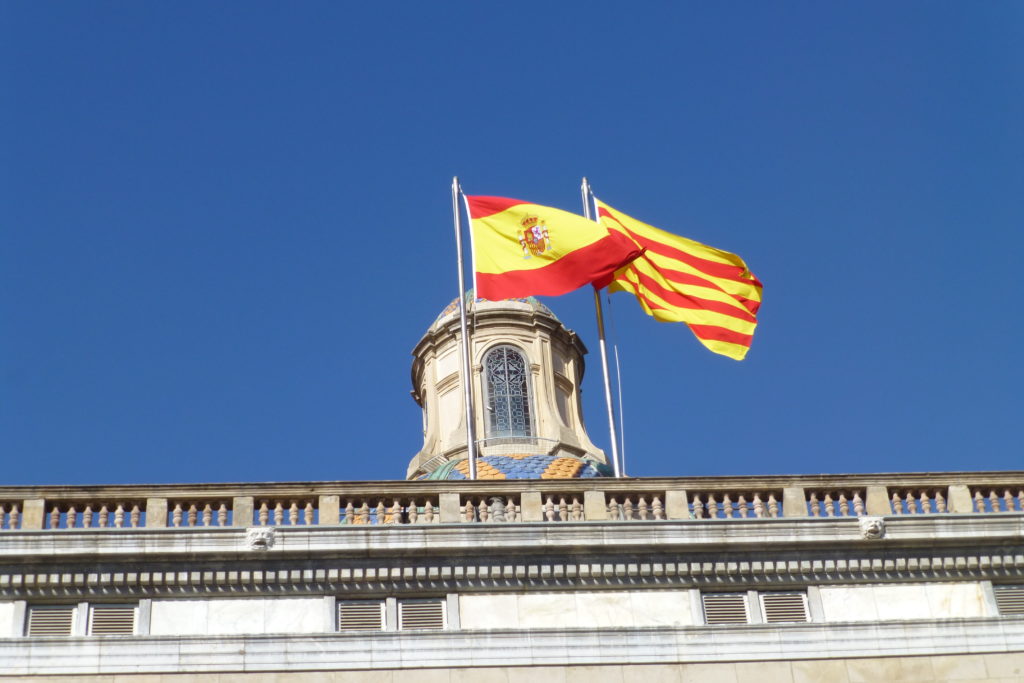
Speaking of Picasso, the museum dedicated to him was our second big attraction. While he is famous for cubism and modernisme, this museum focuses more on his formative years. It chronicles his life’s work from the time he was painting in Barcelona (about age 12), mostly in the form of local landscapes and portraits. It then moves through his time in Madrid; he went there on an art scholarship and promptly began skipping school to copy the work of great paintings hanging in the Prado museum instead. Much of this work is very realistic, and we enjoyed it very much. We’d love to add some pictures, but this is the first place where we heard Spain’s most common tourist phrase: NO FOTO!!
The rest of the museum focuses on his early and late adult life in Paris, from his time as a horny 20-something to his last years obsessively trying to capture the essence of the pigeons outside his apartment. As I said before, most his cubist masterpieces are in Madrid, but several rooms here document the many, many breakdowns he did of Diego Velasquez’s Las Meinas. Diego’s version was often considered the greatest painting ever. I was not particularly blown away by Picasso’s take on the classic Velazquez portrait, but his obsessive dedication and the way the museum showed his evolution from very classical to so off-the-wall was fascinating. But for you, here it is again: NO FOTO!!
As many of you know, both Sarah and I enjoy cooking; what better way to enjoy Barcelona than to take a tapas cooking class? We learned how to make a few appetizers including: romesco sauce with a pulpa (roasted vegetables); a flatbread topped with roasted peppers and cheese; and garlic toast with tomato comfit, buttery olives, and jamon. Anastia, our instructor, gave us quite the lesson on jamon; like most Spaniards (or Catalans), she is passionate about ham in general but especially the Iberian jamon that comes from super happy acorn-fed black pigs. After sticking it on your tongue for four seconds to let the fat spread across your taste buds like butter, you know your purpose in life…to seek out as much Iberian jamon as possible for the rest of your time in Spain! The main course was paella, and dessert was crema Catalun (like crème brule). The ten people in the class shared tasks, so it wasn’t like we did a ton of individual cooking, but the demos were awesome and included ample wine. Plus, Sarah and I both now know how to de-turd a prawn with a toothpick. What an introduction to Barcelona and Spain!
